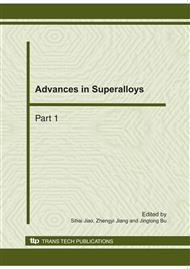p.437
p.441
p.445
p.454
p.460
p.466
p.470
p.475
p.481
Research on Predicting the Stability of Partially Stabilized Zirconia Based on SVM
Abstract:
The stability is one most important product performance index, which can directly determine the quality of the partially stabilized zirconia (PSZ), and the stability of PSZ is always fluctuating in the commercial process, so how to accurately, quickly and easily predict the stability of PSZ in the preparation process is very important. In the present paper, a new mathematical model to predict the stability of PSZ was proposed, based on statistical theory (SLT) and support vector machine (SVM) theory, which relates the stability of PSZ and the influence factors, such as the holding temperature, rising rate of temperature, holding time, decreasing rate of temperature and hardening temperature. Typical data collected from commercial process were collected for the training samples and test samples. Then testing and analyzing was done. The results showed that the max relative error was 1.80%, the least relative error was 0%, and the average relative error was 0.58%. It is accurate and reliable to predict the stability of PSZ by SVM model. Besides, multiple influence factors can be comprehensively considered in the SVM model, thus a new highly effective method for predicting the stability of PSZ is provided for commercial application.
Info:
Periodical:
Pages:
460-465
Citation:
Online since:
October 2010
Authors:
Price:
Сopyright:
© 2011 Trans Tech Publications Ltd. All Rights Reserved
Share:
Citation:


